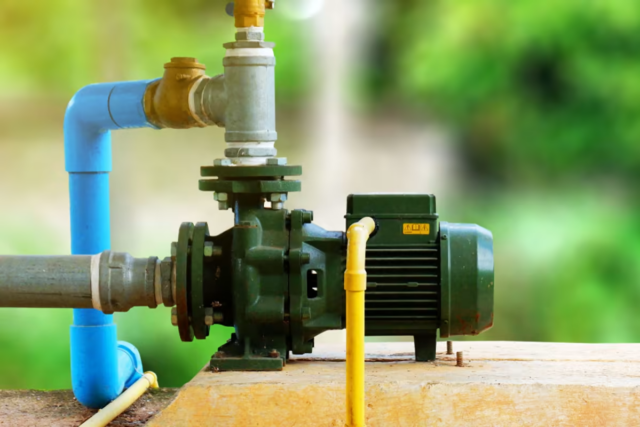Table of Contents
The Essential Guide to Well Pump Installation Budgeting
Installing a well pump is a significant investment that requires careful financial planning. Whether you’re replacing an old pump or installing a new one for the first time, understanding the costs involved is crucial for a successful project. In this article, we’ll provide you with an in-depth guide to budgeting for well pump installation, covering everything from the factors that influence costs to a breakdown of the expenses you can expect.
Factors Affecting Well Pump Installation Costs
The cost of well pump installation can vary widely based on several factors. One of the primary influencers is the type of well pump you choose. Different pump types, such as submersible pumps and jet pumps, have varying installation requirements and associated costs. The depth and location of your well also play a significant role. Deeper wells might require more complex installation procedures and additional materials.
Geographical location is another important factor. Labor rates and material prices can differ based on where you live. Additionally, the condition of the well and the existing infrastructure can impact the installation process. If the well casing or components are deteriorating, it might require repairs or upgrades, adding to the overall expense.
Breaking Down the Components: Understanding Cost Elements
Well pump installation costs can be broken down into several components. These include the cost of the pump itself, which varies depending on the type and brand you choose. Other materials required for installation, such as pipes, wires, and fittings, contribute to the overall cost. Labor charges from the installation professional or contractor also factor into the budget.
Permit fees are another consideration. Depending on your location, you might need permits for well drilling and pump installation. These fees can vary and should be included in your budgeting process. Additionally, any necessary electrical work to connect the pump to your home’s power supply will incur costs.
Estimating the Total Expense: Budgeting for Well Pump and Equipment
When budgeting for well pump installation, it’s important to gather quotes from multiple contractors to get a sense of the range of costs. The total expense will depend on the specific details of your project. On average, well pump installation costs can range from a few hundred to several thousand dollars. Keep in mind that cheaper options might not always provide the best long-term value. Investing in quality equipment and professional installation can help prevent future issues and expenses.
To estimate the total expense accurately, consider all components of the installation process, including materials, labor, permits, and any additional services required. Don’t forget to allocate a portion of your budget for unexpected costs and contingencies that might arise during the installation process.
In the next sections, we’ll delve deeper into the decision-making process, helping you determine whether professional installation is the right choice for you and how to manage unforeseen expenses. By understanding the various cost elements and planning accordingly, you’ll be well-prepared to make informed decisions about your well pump installation project.
Professional Help or DIY? The Financial Implications of Installation Choices
When it comes to well pump installation, one of the key decisions you’ll face is whether to hire a professional contractor or attempt a DIY installation. While the DIY approach might seem cost-effective at first glance, it’s essential to weigh the financial implications and potential risks.
While DIY installations may seem to save money upfront, they can lead to higher well pump replacement fee in the long run if not done correctly. Professional contractors have the expertise and experience to ensure that the installation is carried out accurately, minimizing the chances of costly mistakes. Moreover, a poorly installed well pump can result in reduced efficiency, increased energy consumption, and even damage to the pump itself.
Professional installations often come with warranties or guarantees, providing an added layer of financial security. In the case of any issues or malfunctions, a reputable contractor will address the problem without additional cost to you. When comparing the financial impact of DIY versus professional installation, consider the potential long-term savings and peace of mind that come with a well-executed professional installation.
Hidden Costs and Contingencies: Planning for Unforeseen Expenses
Well-pump installation projects, like many construction endeavors, can sometimes come with unexpected challenges. Unforeseen issues, such as encountering rock formations while drilling or discovering corroded well casing, can lead to additional costs. This is why it’s crucial to include a contingency fund in your budget.
Setting aside a percentage of your budget for contingencies—typically around 10%—can help cover unexpected expenses without derailing your financial plans. While it’s impossible to predict every potential issue, having a contingency fund can provide peace of mind and financial flexibility, ensuring that the project remains on track even in the face of unforeseen challenges.
Cost-Effective Strategies: Tips for Managing Well Pump Installation Budgets
As you prepare to budget for well pump installation, consider implementing a few cost-effective strategies to optimize your investment:
- Obtain Multiple Quotes: Reach out to multiple contractors to get quotes for the installation. This will give you a clearer picture of the average cost and help you identify any outliers.
- Focus on Quality: While it might be tempting to choose the cheapest option, prioritize quality equipment and professional installation. Investing a bit more upfront can prevent expensive repairs and replacements down the line.
- Research Financing Options: If the upfront cost of installation is a concern, research financing options that may be available to you. Some contractors or lenders offer payment plans or loans tailored to well-pump installations.
- Regular Maintenance: Budget not only for the installation itself but also for ongoing maintenance. Well, pumps require periodic servicing to ensure optimal performance and longevity.
By carefully considering these factors and implementing cost-effective strategies, you can approach your well pump installation project with confidence and a clear understanding of the financial aspects involved. In the subsequent sections, we’ll explore the nuances of comparing quotes from different contractors and discuss how well pump installation can impact your property’s overall value.
Comparing Quotes: Navigating Price Variations among Contractors
When budgeting for well pump installation, obtaining quotes from different contractors is a crucial step in ensuring you’re getting the best value for your investment. However, comparing quotes can be more complex than simply choosing the lowest price. Here’s how to navigate price variations and make an informed decision:
- Evaluate Inclusions: Carefully review what each contractor’s quote includes. Some quotes might seem lower at first glance, but they could be missing crucial components or services that other contractors include. Ensure you’re comparing apples to apples.
- Check Reputation and Experience: Don’t solely base your decision on cost. Analyze the reputation and experience of each potential contractor. A slightly higher quote from a reputable and experienced contractor might be more cost-effective in the long run due to higher-quality work and better customer service.
- Ask About Guarantees and Warranties: Inquire about any guarantees or warranties offered by each contractor. A contractor who stands behind their work with a warranty provides added financial security.
- Consider Timelines: Time is money, especially if you’re without a functional well pump. Ask contractors about their estimated completion times and factor in any potential disruptions to your daily routine.
- Read Reviews: Look for online reviews or ask for references from previous clients. Positive reviews can provide insights into a contractor’s professionalism, communication, and overall service quality.
Investing for the Long Run: How Well Pump Installation Relates to Property Value
Well pump installation isn’t just about the immediate costs; it’s also an investment in your property’s value and functionality. A well-maintained and efficiently operating well pump can enhance the overall appeal and value of your home.
When considering the financial implications, think about how well pump installation can positively impact your property’s resale value. Potential homebuyers might view a well-maintained well pump system as a desirable feature, potentially increasing your property’s attractiveness on the market.
Additionally, if your property is located in an area where access to municipal water is limited, having a reliable well-pump system can be a strong selling point. The convenience and cost savings associated with well water can make your property more appealing to potential buyers.
Beyond Installation: Budgeting for Maintenance and Upkeep of Your Well Pump
While budgeting for well pump installation is essential, it’s equally important to plan for ongoing maintenance and upkeep. Regular maintenance can extend the life of your well pump and help prevent costly breakdowns.
Include periodic servicing and inspections in your annual budget. Routine maintenance might involve tasks like checking pressure levels, testing the pump’s performance, and addressing any minor issues before they escalate. Budgeting for maintenance ensures that your well pump continues to operate efficiently and avoids unexpected repair expenses.
In conclusion, well pump installation involves more than just the initial costs. By carefully comparing quotes, considering the long-term impact on property value, and factoring in ongoing maintenance expenses, you can approach your well pump project with a comprehensive understanding of its financial implications. This knowledge will enable you to make informed decisions that align with your budget and contribute to the functionality and value of your property.








